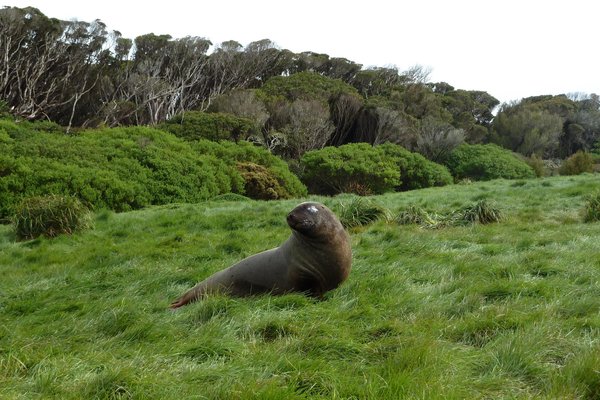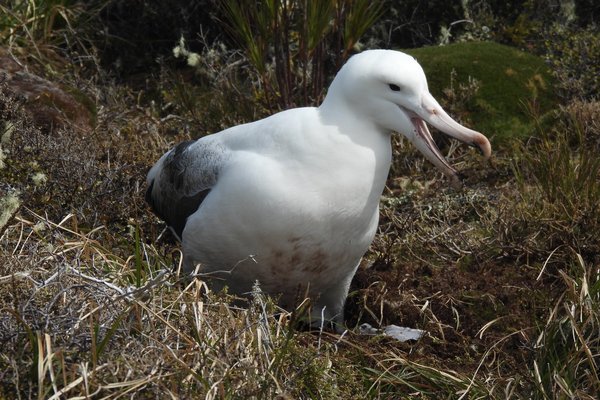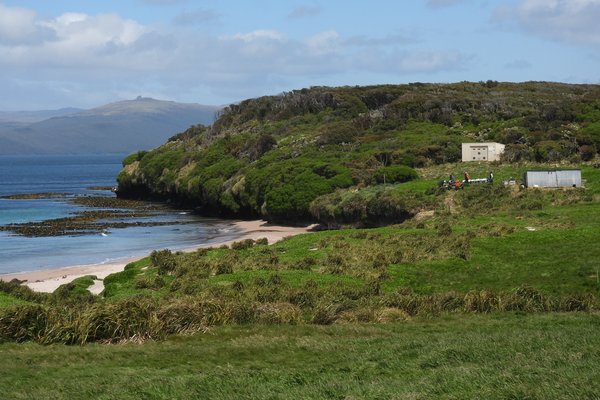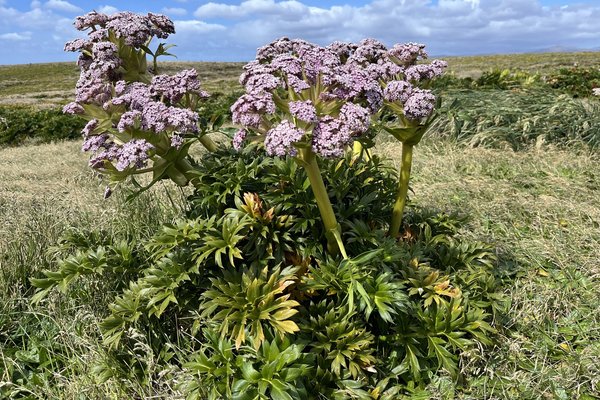New Zealand
Sub-Antarctic Islands
The New Zealand Sub-Antarctic Islands comprise some of the world’s least-modified islands and the surrounding marine area.
As a group, they hold an outstanding diversity of endemic and threatened species among their marine fauna, land birds, and invertebrates. It’s an important area for research into island dynamics and ecology, such as the study of the loss of flight in birds. It also has the most diverse community of seabirds in the world, with eight species endemic to the region
Community Perspective: The included islands are: Antipodes Islands, Auckland Islands, Bounty Islands, Campbell Island group, and The Snares. They are only reachable on a multi-day expedition cruise. Els shared her trip notes to The Snares, Auckland Islands and Campbell.
Site Info
Official Information
- Full Name
- New Zealand Sub-Antarctic Islands (ID: 877)
- Country
- New Zealand
- Status
-
Inscribed 1998
Site history
History of Sub-Antarctic Islands
- 1998: Inscribed
- Inscribed
- Type
- Natural
- Criteria
- ix
- x
Links
- UNESCO
- whc.unesco.org
- Official
-
- doc.govt.nz — Department of Conservation
- Related
-
- subantarcticislands.com — SubAntarctic - an educational resource
All Links
UNESCO.org
- whc.unesco.org — whc.unesco.org/
Official Website
- doc.govt.nz — Department of Conservation
Related Resources
- subantarcticislands.com — SubAntarctic - an educational resource
News Article
- March 22, 2018 npr.org — New Zealand Eradicates Invasive Mice From Antipodes Islands
Community Information
- Community Category
- Natural landscape: Insular
Travel Information
High entrance fees
As of 2025, the New Zealand Department of Conservation’s visitor fee for Subantarctic Auckland …
Takes more than 5 days to visit
Guided Tour Only
"All commercial tourist visitors to the islands travel are part of permitted guided tours, …
One thousand visitors or fewer
Recent Connections
-
Notable examples of Crown shyness
Auckland Islands: Southern Rātā trees (…
-
High entrance fees
As of 2025, the New Zealand Department …
-
Reintroduced Species
Campbell teal on Campbell Island were r…
Connections of Sub-Antarctic Islands
- Individual People
-
-
Cousteau
L'Équipe Cousteau à la redécouverte du monde, episode "Au pays du long nuage blanc" (1988)See www.youtube.com
-
William Bligh
The Bounty Islands - discovered by Bligh in 1788 whilst on his way to Tahiti and named after his ship
-
- Geography
-
-
Dependent territories
"Although considered as integral parts of New Zealand, ... the .. island groups are not part of any region or district, but are instead designated as Area Outside Territorial Authority." (wiki) -
Subantarctic
Antipodes Islands: 49°40′S 178°46′E; Auckland Islands: 50°42′S 166°05′E; Bounty Islands: 47°45′S 179°03′E; Campbell Island Group: 52°32′S 169°08′E; Snares Islands: 48°01′S 166°32′E -
Submerged continent
Zealandia -
Fjords
"Quaternary glaciers have left shallow cirques, moraines and fjords on some islands." (AB ev)
-
Antipodes points
NEW ZEALAND SUBANTARCTIC ISLANDS(Bounty island)=THE LOIRE VALLEY(Angers) S47 45 E179 03 = N47 23 56.004 E0 42 10.008 AND )=LE HAVRE S49 41 E178 48 = N49 29 20.6 E0 06 54.8 -
Marine sites
"The World Heritage status also applies to the marine environment out to 12 nautical miles from each group. Including a total land area of 76,458ha, the marine area takes in 1,400,000 ha and constitutes one of New Zealand’s remotest protected natural areas" (OUV statement)
-
Southernmost
No. 3 (Campbell Island), at 52?33 S -
Volcanic plugs
Campbell Island -
Cirques
"Quaternary glaciers have left shallow cirques, moraines and fjords on some islands." (AB ev)
-
Pacific Ocean
-
Formerly inhabited islands
Auckland Islands (part of NZ Sub Antarcic Islands) "Traces of Polynesian settlement, possibly dating to the 13th century, have been found by archaeologists on Enderby Island. This is the most southerly settlement by Polynesians yet known.". (wiki) -
Polynesia
Traces of Polynesian settlement, possibly dating to the 13th century, have been found by archaeologists on Enderby Island. This is the most southerly settlement by Polynesians yet known. (wiki) -
Uninhabited islands
-
- Trivia
-
-
On Banknotes
Campbell Island on 5 New Zealand dollar reverseSee www.ra2d.com
-
Furthest distance apart
1,010km/627 miles (Bounty Islands - Auckland Islands)
-
- Ecology
-
-
Whales
Surrounding waters are reproductive areas for Southern right whale; also seen are Pygmy blue whale, Blue whale, Fin whale (source)
-
Endemic Bird Species
Definition of species/sub species in flux - c14 including species of Shag, Penguin, Parakeet, Snipe, Teal, Albatross, Rail, Oystercatcher, Fernbird -
Penguins
King, Gentoo, Fjordland, Snares, Royal, Yellow eyed, Little, Erect Crested, Rockhopper -
Megaherbs
"They are the best known plants of the New Zealand subantarctic islands" (wiki), including Campbell Island carrot, Ross lilySee en.wikipedia.org
-
Peat
Auckland Islands "This paper contains a description of the peat soils on part of the Auckland Islands which lie in the South Pacific Ocean approximately 200 miles south of New Zealand. Peat forms a blanket over the surface of the Islands and is the parent material of most of the soils -
Oceanic Dolphins
Dusky, Hourglass dolphins, Orca and Long-finned pilot whale (source)
-
Seals
elephant seal -
Antarctic Floristic Kingdom
-
Albatross breeding sites
Antipodes Islands - Antipodean (race antipodensis), Shy (race steadi - alternatively considered the "White Capped" species), Black-browed, Light-mantled Auckland Islands - Gibson's, Southern royal (Enderby only), Northern royal (Enderby only), Shy (race steadi), Light-mantled Bounty Islands - Salvin's Campbell - Antipodean (race antipodensis), Southern royal, Black-browed, Campbell, Grey-headed, Light-mantled, Sooty Snares - Salvin's, Black-browed, Buller's -
Notable Trees
World's Loneliest Tree (on Campbell Island) -
Strict Nature Reserve
Fully (except marine parts); "All visitors must have a permit and be accompanied by a Department of Conservation officer who enforces a rigorous minimum impact code which includes great care not to import alien species, weeds or seeds. Visits are limited to very few places in the Auckland Islands (Enderby Island, Port Ross, Carnley Harbour), to Campbell Island and by 600 visitors a year at the large sites, and 150 a year at small sites." (UNEP-WCMC) -
Icebergs
"Icebergs approach New Zealand’s sub-Antarctic islands every few years." (source)
-
Tundra
Antipodes Subantarctic Islands tundra ecoregion (wiki)
-
Reintroduced Species
Campbell teal on Campbell Island were reintroduced after the island was made rat-free (wiki)
-
Notable examples of Crown shyness
Auckland Islands: Southern Rātā trees (Metrosideros umbellata). This link has a video of them 'social distancing' at Enderby Island.
-
- Damaged
-
-
'Threatened' by Infestation of Rats
Campbell IslandSee www.newzeal.com
-
- World Heritage Process
-
-
Perfect Inscriptions
1998 -
Recommended for combination by AB
With Macquarie Island: "IUCN suggests that if the NZSAI are inscribed that the Australian and New Zealand authorities be urged to agree to consider the six island groups as one transfrontier cluster World Heritage site". (AB ev)
-
- Human Activity
-
-
Shipwrecks
Auckland Islands: remains of the ‘Grafton’ which was wrecked here in 1864 (wiki)
-
Seal Hunting
Campbell Island (1810-1840s); island was discovered in 1810 by Captain Frederick Hasselborough of the sealing brig Perseverance -
Slavery
The Auckland islands were briefly settled by Maoris from Chatham Island. They brought with them Moriori slaves. The Moriori had been the indigenous people of the Chathams who were enslaved by Maoris. "Sheep farming became popular and profitable and some Maori diversified into that. In 1842 one chief took nearly 30 slaves with him and his people and went to the Auckland Islands to live. The conditions were too harsh and the settlement was abandoned in 1854."
-
- WHS on Other Lists
-
-
Centres of Plant Diversity
Au17 Subantarctic Islands - "As a group they are distinct from all other island groups, having the highest diversity of indigenous plants and birds. The “megaherbs’ are unique to the NZSAI and Macquarie Island." -
Biodiversity hotspot
New Zealand
-
- Timeline
-
-
Miocene
The Auckland, Campbell and Antipodes islands are primarily of recent volcanic origin. The first two are eroded volcanic domes created 10-15 million years ago. The western sides of all three groups have been eroded significantly, creating steep cliffs, while on the eastern sides lava flows and glaciers from the Pleistocene era (about 2 million years ago) have formed U-shaped valleys, fiords and harbours. The Antipodes volcano is the youngest and least eroded.
-
- Visiting conditions
-
-
High entrance fees
As of 2025, the New Zealand Department of Conservation’s visitor fee for Subantarctic Auckland and Campbell Island is EUR164 per person. It will rise further towards 2027/2028 (source)
-
Visitor Limits
"The CMS continues to provide strict limits on daily and annual visitor numbers to the permitted visitor areas within the World Heritage site... The current maximum limit on the number of visitors per year is 1,700 at the “hardened” track on Enderby Island" (IUCN Outlook 2025)
-
Biosecurity rules for tourists
See www.doc.govt.nz
-
Takes more than 5 days to visit
Combined cruise with Macquarie Island, 14 days -
Guided Tour Only
"All commercial tourist visitors to the islands travel are part of permitted guided tours, where they receive comprehensive in-person education and interpretation from their cruise operator" (IUCN Outlook 2025)
-
One thousand visitors or fewer
“annual visitation to this site has fluctuated from approximately 250 to 750 visitors since the mid-2000s.”See www.mdpi.com
-
- Literature & Film
News
- npr.org 03/22/2018
- New Zealand Eradicates Invasive Mi…
Community Reviews
Show full reviews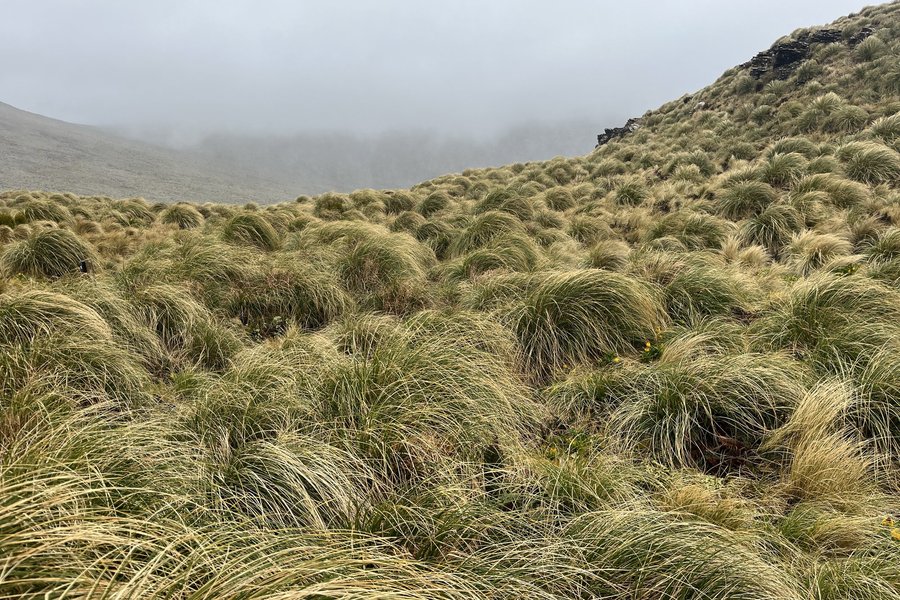
The most southerly of the five New Zealand Subantarctic Islands, the Campbell Island group is volcanic in origin and also has glacial landforms, such as moraines. In the 19th century, it was exploited for sealing and whaling, and a sheep farm was established. All these activities and associated humans have since gone, and rats were eradicated in 2001. Ecologically, Campbell stands out as the most important breeding area of the Southern Royal Albatross and the reintroduced flightless Campbell Island Teal.
Perseverance Harbour zodiac cruise
Clouds gathered around Campbell's hilltops when our ship arrived in the early morning. We were scheduled to take a zodiac cruise in Perseverance Harbour, but it looked like it would be a wet one. So far, we have been very lucky with the weather on this trip, with sun and calm circumstances at the main stops such as Enderby Island and Macquarie Island. At Campbell, we were going to experience what the weather is usually like on the islands: foggy, windy, wet.
We started the Zodiac cruise in light rain, but we still enjoyed it enough to look out for the Campbell Island specials. First, we dropped by a group of sea lions hanging out together. A bit further down the coast, we saw a large male trying to push a female into a rock so she could not escape him to mate.
Along the shore, we saw a few Campbell shags and some interesting megaherbs. This natural harbour is also home to an odd tourist …
Keep reading 0 comments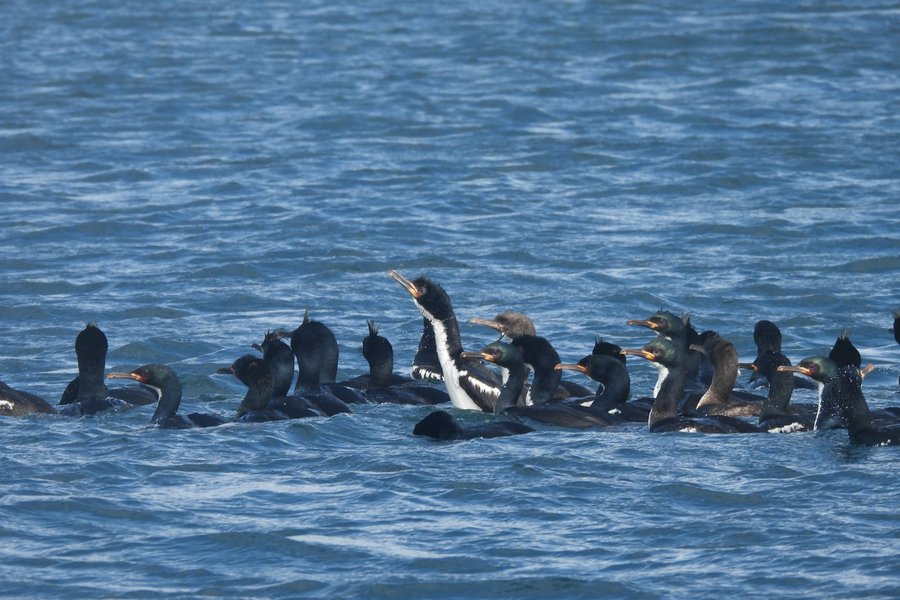
The volcanic Auckland Islands lie close to each other, separated by narrow channels, and the coastline is rugged, with numerous deep inlets. Traces of Polynesian settlement, possibly dating to the 13th century, have been found here. There are current research efforts, including with drones using LIDAR, to uncover more evidence of this. The Europeans later used some of the islands as a base for whaling and sealing, and altered the ecosystem via the introduction of invasive species. A massive eradication project is ongoing.
We had a rough night and morning getting there from The Snares, as there was a wind of up to 70 km/h. I slid from one side of the bed to the other all night long, but fortunately did not get seasick. The Aucklands are a much larger island group than The Snares. We first went into Carnley Harbour – but the weather was rough here too. The expedition team killed the time with some presentations, including one by albatross researchers, which we then dropped off on lonely Adam’s Island. The ship then sailed back to the Northern part of the islands, where we first set foot on the Subs on the main Auckland Island. The soil is very peaty, so we were happy with the gumboots provided. This island is covered in trees, mostly one species (Southern Rata). It has seen some unsuccessful attempts at human habitation, notably at Hardwicke settlement. We visited the small cemetery, which is a grim reminder of …
Keep reading 2 comments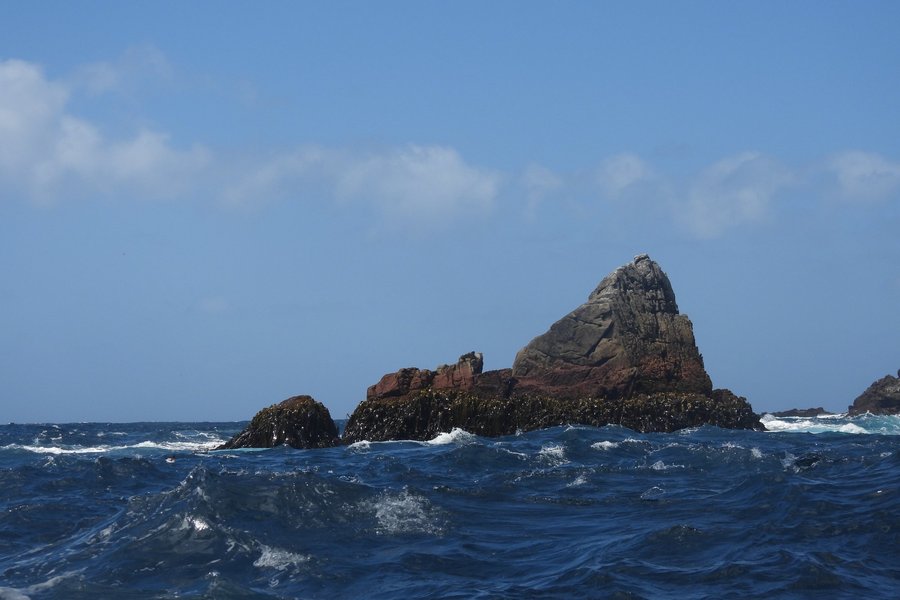
The New Zealand Sub-Antarctic Islands (shortened to NZSAI by scientists, or The Subs by its admirers) are a seldom-visited collection of five island groups lying between New Zealand’s South Island and Antarctica. Their climate is mild and wet: you will find no permanent snow, and icebergs are only encountered floating by once every few years. What they do have is an exceptional diversity and abundance of birds, high levels of endemism due to their isolated locations, ‘megaherbs’ and rich flora in general, and also outstanding marine fauna species.
The only way to visit them is on an expedition cruise. Two larger companies offer one or two sailings yearly. I went with Heritage Expeditions on their “Galapagos of the Southern Ocean” cruise in November 2025. We visited 3 out of the 5 included island groups: The Snares, Auckland Islands, and Campbell Islands.
The Snares
Although closest to the New Zealand mainland, the Snares have the highest conservation status (unaltered by man or invasive species) and landings are forbidden. Key natural features include extensive forests (its landmass is actually a geological extension of the South Island’s Alps, and the flora resembles what the mainland looked like before human settlement) and significant seabird breeding populations.
We approached the islands around lunchtime on our first day of cruising. I had spent some hours in the morning with the birding crew, and managed to get pictures of the most common seabirds that hang around here such as the Pintado Petrel and the first albatrosses. The …
Keep reading 2 comments
